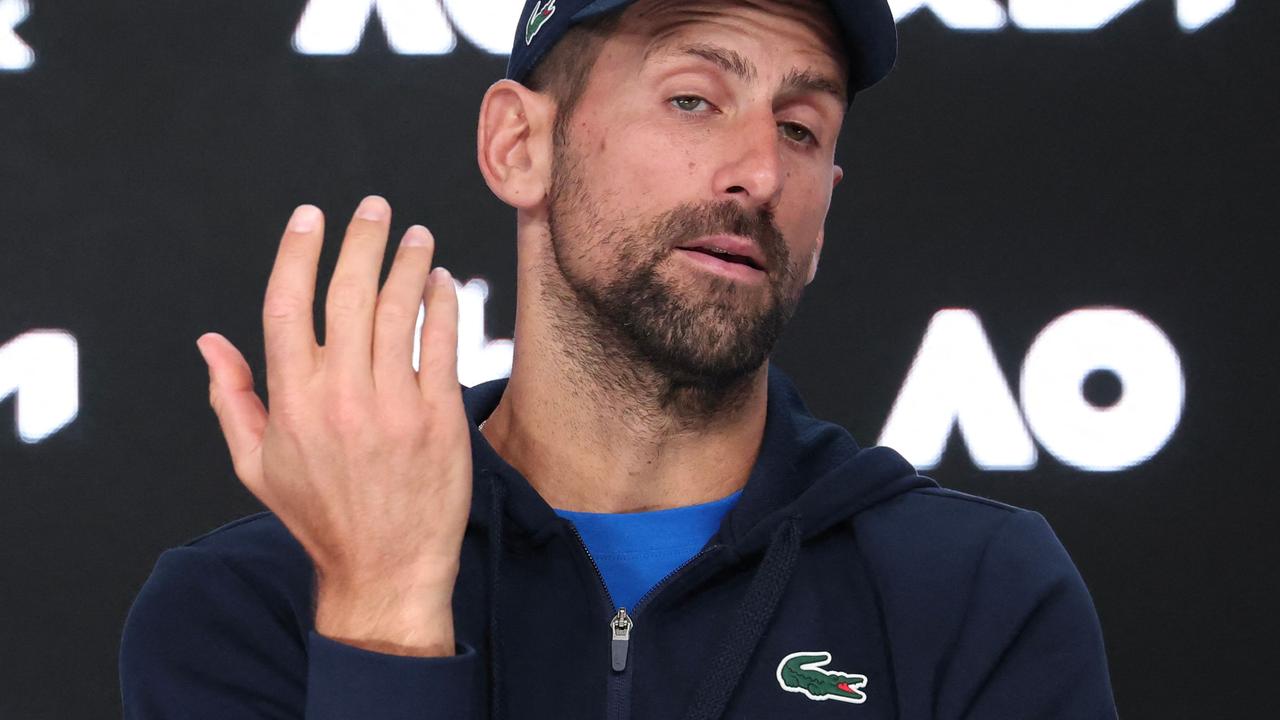Tennis star Jennifer Brady’s extraordinary body transformation
Jennifer Brady’s body isn’t the only thing that’s different about the tennis star as she prepares for her first ever grand slam final tonight.

Few will be brave enough to bet against Naomi Osaka chalking up a fourth grand slam title but a new-and-improved Jennifer Brady has never had a better chance to stamp her authority on the tennis world.
The American will play Osaka — who revealed the “disturbing” messages her sister has been sending in a group text chat after beating Serena Williams — in the Australian Open final tonight as she reaps the rewards of a career renaissance that has seen her become one of the most dangerous players on the women’s tour.
A star in the US college system for the University of California, Los Angeles, Brady — who emerged as the bright light tennis needed during quarantine — struggled to break through after turning pro and strutting her stuff among the WTA’s best.
At the end of 2018, the now-25-year-old ended the year ranked 116th in the world, before moving up to 56 by the end of 2019. But instead of accepting her fate as a middling player happy if she claimed the old scalp or two at grand slams, Brady decided something had to change.
Having lost in the first round of the US Open in 2018 and 2019, Brady wanted more. She left her base in Florida and headed for Europe — an extremely rare move for American players who progress through the US system — to link up with new coach Michael Geserer in Germany.
Brady hadn’t advanced as far as she’d hoped by that stage of her career, so went out on a limb.
“There was a time where I was just like, ‘OK, what can I do to give myself the best opportunity to see where I can go in tennis? How can I achieve or maximise my potential?’” Brady told the Los Angeles Times last year.
“It was a process of over a few months. I was thinking about finding a coach and I was able to find a coach and he was based out of Germany, and I had no problem going over there training if I know this is worth it and is going to make me better.
“The worst that could happen is I don’t like it. I really, really enjoyed it and was able to get a lot better.”
The move paid dividends. Brady booked a spot at the Brisbane International in January last year as a qualifier, then beat five-time grand slam champion Maria Sharapova and world No. 1 Ash Barty.
She was on an upward swing before COVID-19 stopped her new-found momentum in its tracks.
But rather than go into hibernation, Brady made it to Germany again and while her opponents were enjoying some rare time at home, she worked her backside off.
It meant when tennis resumed in 2020 — having just scraped into the top 50 — she was a completely different threat. At her first tournament back in Kentucky last August, Brady — now the world No. 24 — won her maiden WTA title, beating the likes of Heather Watson and Coco Gauff en route to the trophy.
Soon after, at the US Open, Brady qualified for her first grand slam semi-final, beating three-time major winner Angelique Kerber in the process before losing to Osaka.
During the tournament at Flushing Meadows, tennis broadcaster Catherine Whitaker raved about Brady’s incredible transformation.
“She has the most amazing forehand. It is a bludgeon. It is the most extraordinary shot,” Whitaker told The Tennis Podcast.
“I’m sensitive about how we talk about her transformation in physique but without question she has transformed herself physically as much as I’ve ever seen a tennis player do in this short a time.
“She decided that she wasn’t optimising her game in that (American) system and she went to train in Germany with a coach called Michael Geserer.
“Instead of being in Florida she went to Germany and trained like a pit bull by the sounds of it and continued it. She did the same thing during lockdown, which I find even more impressive because lockdown came at exactly the wrong time for her.”

First round exits at Roland Garros and in Abu Dhabi later in 2020 were balanced out by semi-final showings in the Czech Republic and in Melbourne for a lead-in tournament before the Australian Open.
Having qualified for her first grand slam final by beating Karolina Muchova in a three-set thriller, there’s no question Brady’s recent run of hot form has her established as one of the most damaging players in the draw of any tournament she enters.
It’s a reality that seemed unfathomable as little as 12-18 months ago, as Whitaker pointed out this week.
“All these firsts are coming so thick and fast for Jennifer Brady,” she told The Tennis Podcast on Friday.
“When tennis returned Jennifer Brady was ranked 49th in the world and since then she’s won her first WTA title, reached her first grand slam semi-final at the US Open and reached her first slam final at the Australian Open.
“I know I always say it but it’s just extraordinary how transformed she is and not remotely by accident.
“She made a really big call during lockdown to go to Germany … Everybody else talked about, ‘Well there are positives, I get to spend more time with my family, that’s something we don’t get on the tennis tour’. None of that for Jennifer Brady.
“She went to Germany and she decided to transform herself and her career with a new coach, Michael Geserer. It’s so admirable and so inspiring.”
Whether Brady has transformed enough to exact her revenge on Osaka for last year’s US Open defeat remains to be seen, but the woman with the lethal forehand won’t die wondering on Saturday night.




